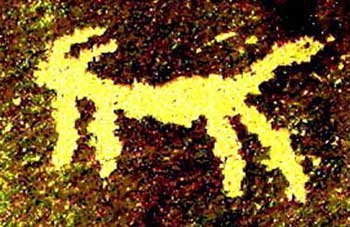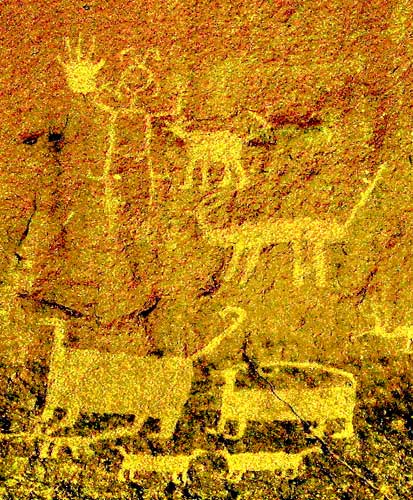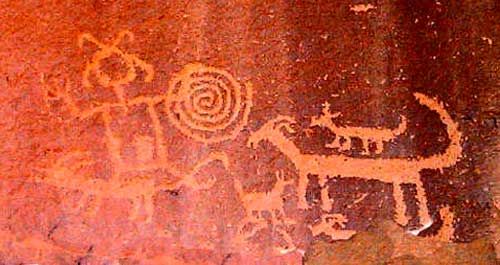Anasazi rock art petroglyph from Chaco Canyon in the Chaco Culture National Park, New Mexico, dated to between 850 and 1200 C.E.. In the detail above, a Pueblo Indian (Chaco Anasazi) hunter or warrior, is depicted with weapon and shield, on a hunt with a pack of dogs.
As the petroglyphs don't generally reflect awareness of distance and perspective in art, the two sizes of dogs probably reflect two breeds on the hunt, rather than the far less likely possibility of hunters requiring puppies on the hunt.
 The larger village dog with bent ears would be of value in cornering large game, but the tinier breed depicted with upright ears would be essential for flushing lizards or small mammals that hide in cracks or desert burrows. The larger village dog with bent ears would be of value in cornering large game, but the tinier breed depicted with upright ears would be essential for flushing lizards or small mammals that hide in cracks or desert burrows.
The image of the small dog on the back of the large dog again is not likely an attempt at perspective in the two-dimensional world of the petroglyphic mileau. Rather, it is a small jest on the part of the wall-artist, just as today photographers like to show chihuahuas riding on the backs of Great Danes.
In another detail from the mural (below) showing another hunter with the same headdress and several dogs, both large and small breeds, and a big hand imprint.
That there is cultic meaning, lost to time, seems obvious from the warriors' odd head-dress and the shield which is a water symbol. The mural is tightly packed with images and a great many dogs, with one dog (shown in the in-text figure) being apparently a traveler in the night sky, perhaps a constellation associated with the hunt.



|

